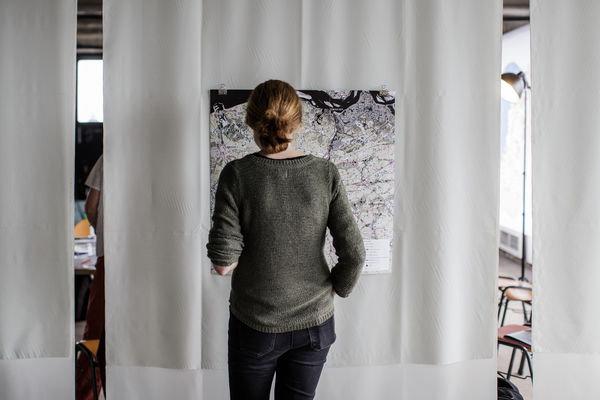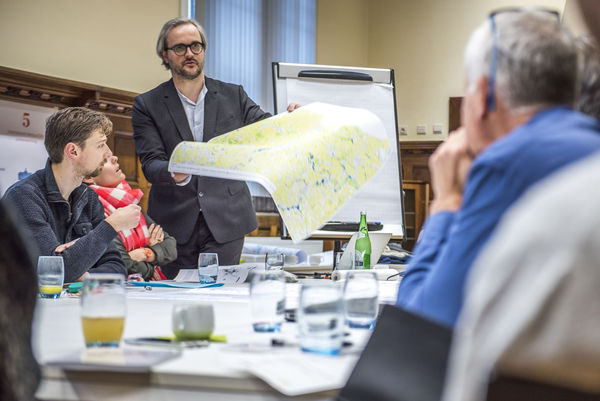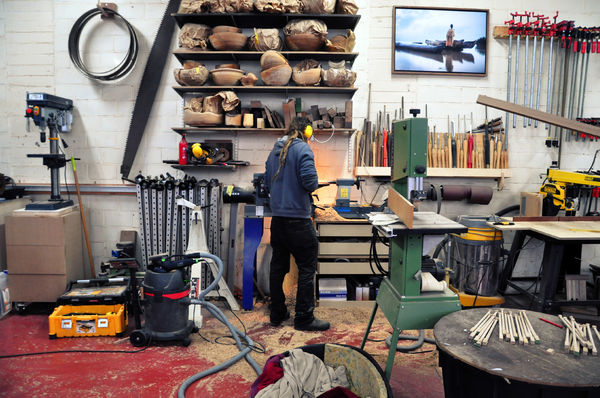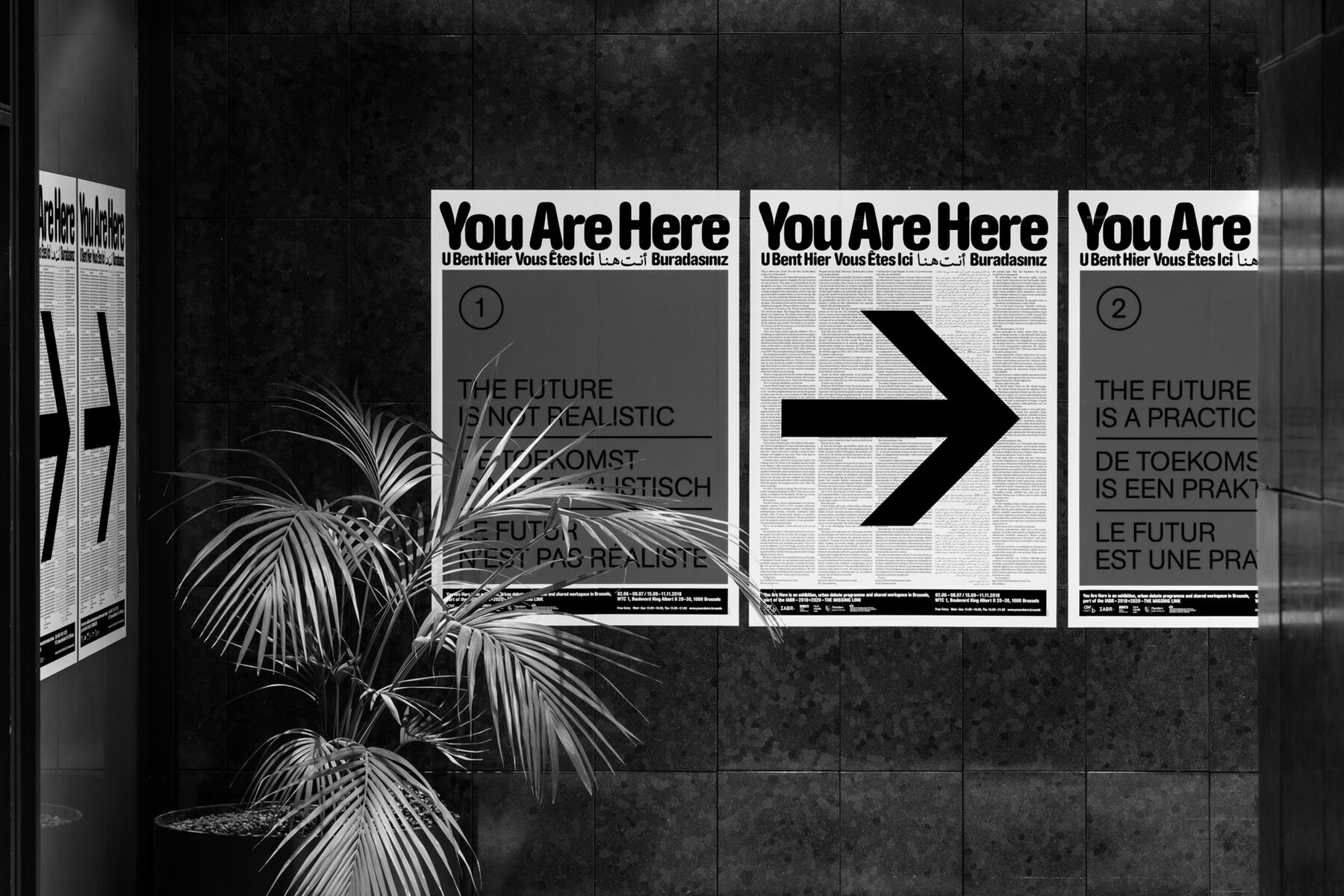Strong demographic growth is by definition putting great pressure on the housing demand. But is this possible in a way that consumes less space than is currently the norm? Can that growth also be used as a means to create a region that is climate-proof, with smooth and healthy mobility, and with a sustainable circular economy? How does population growth become an opportunity - a lever - for sustainable spatial development?
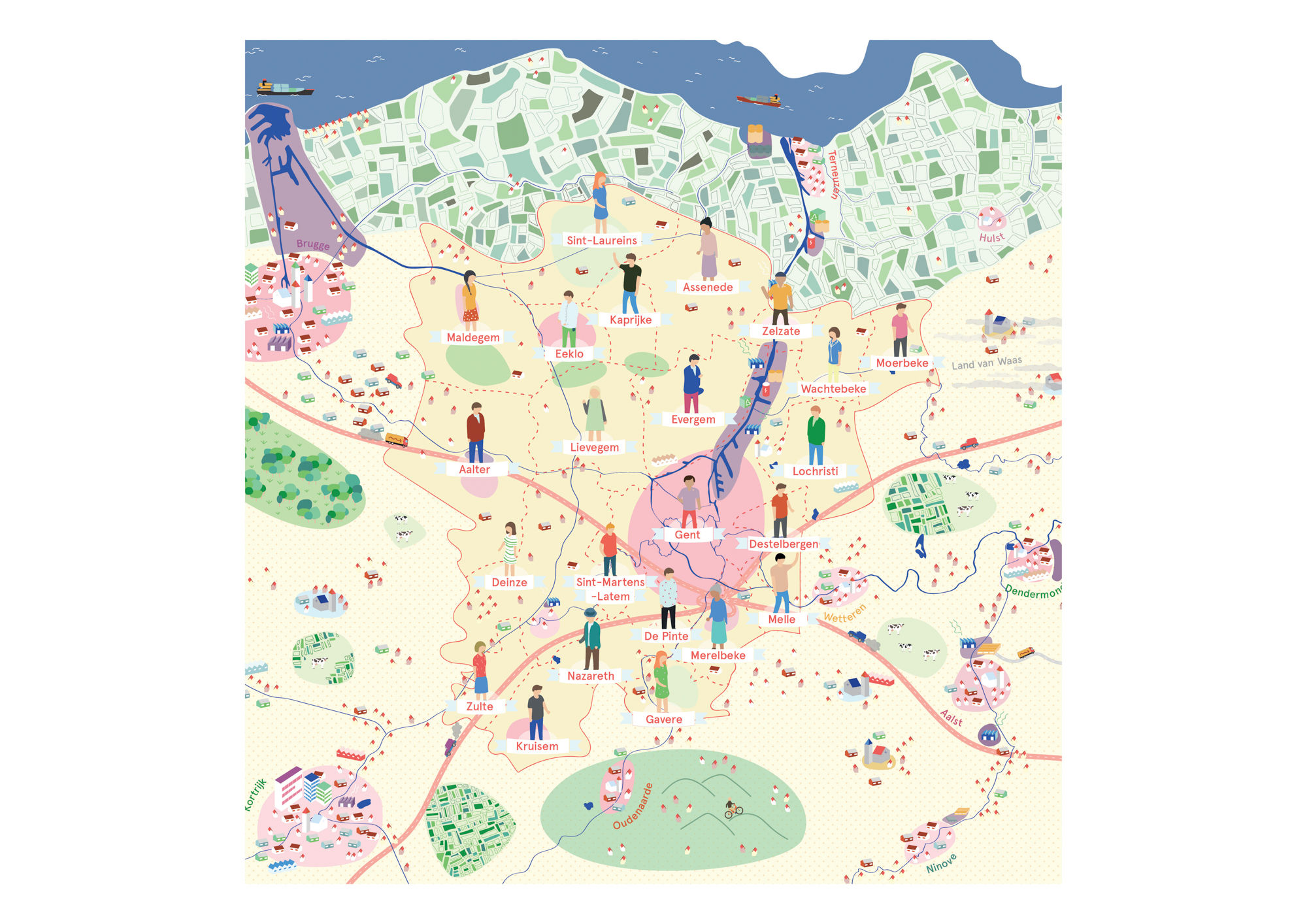
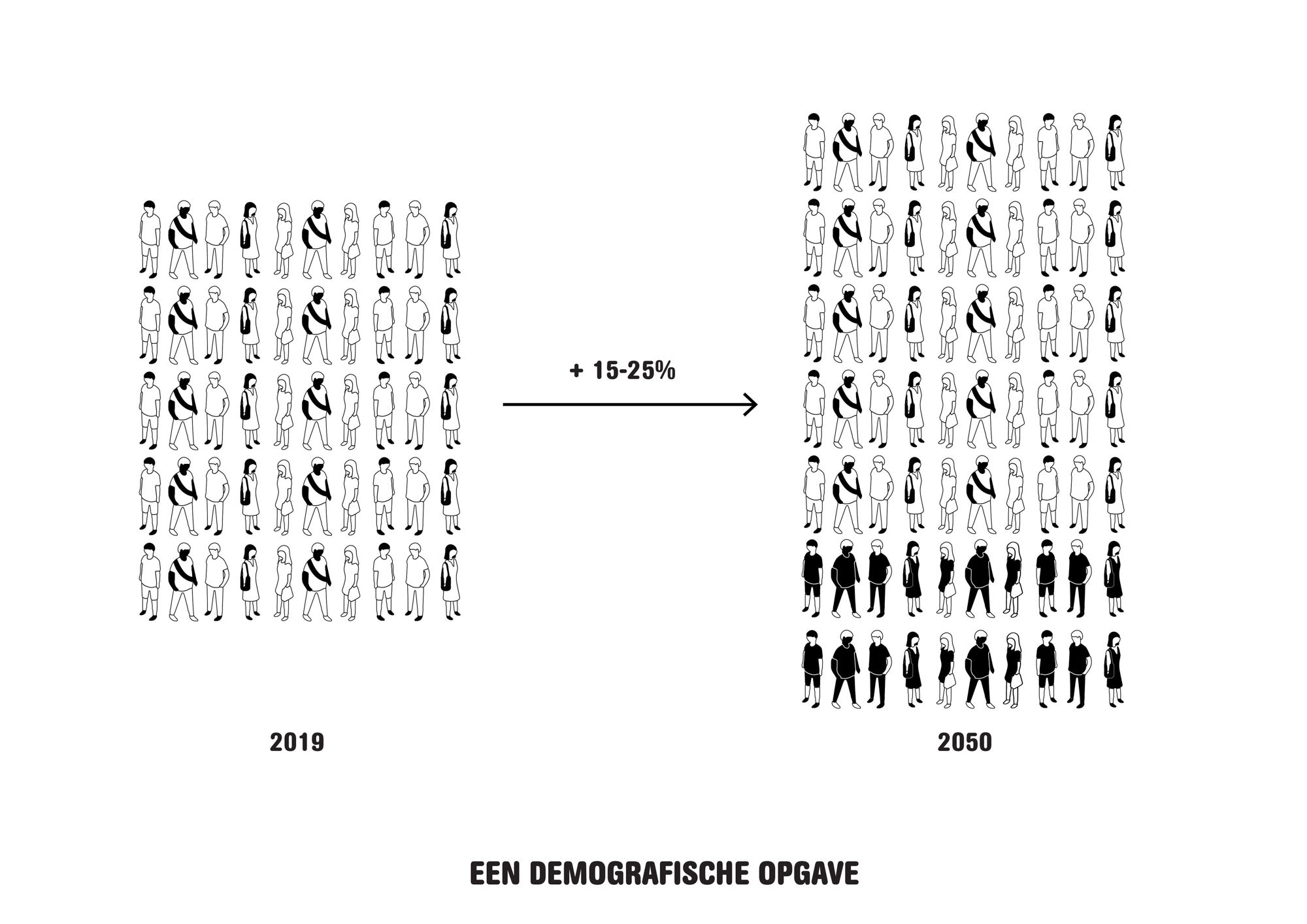
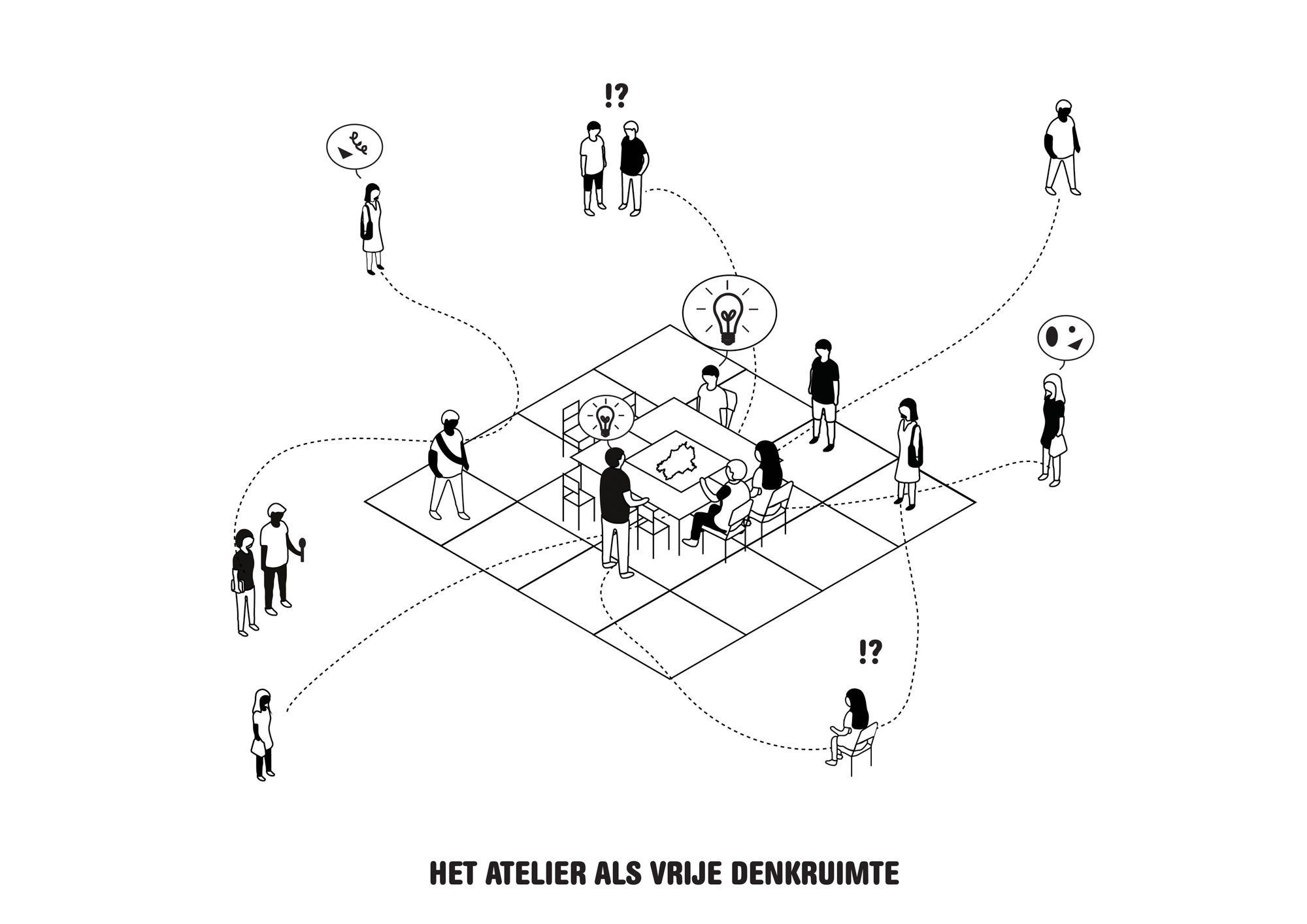
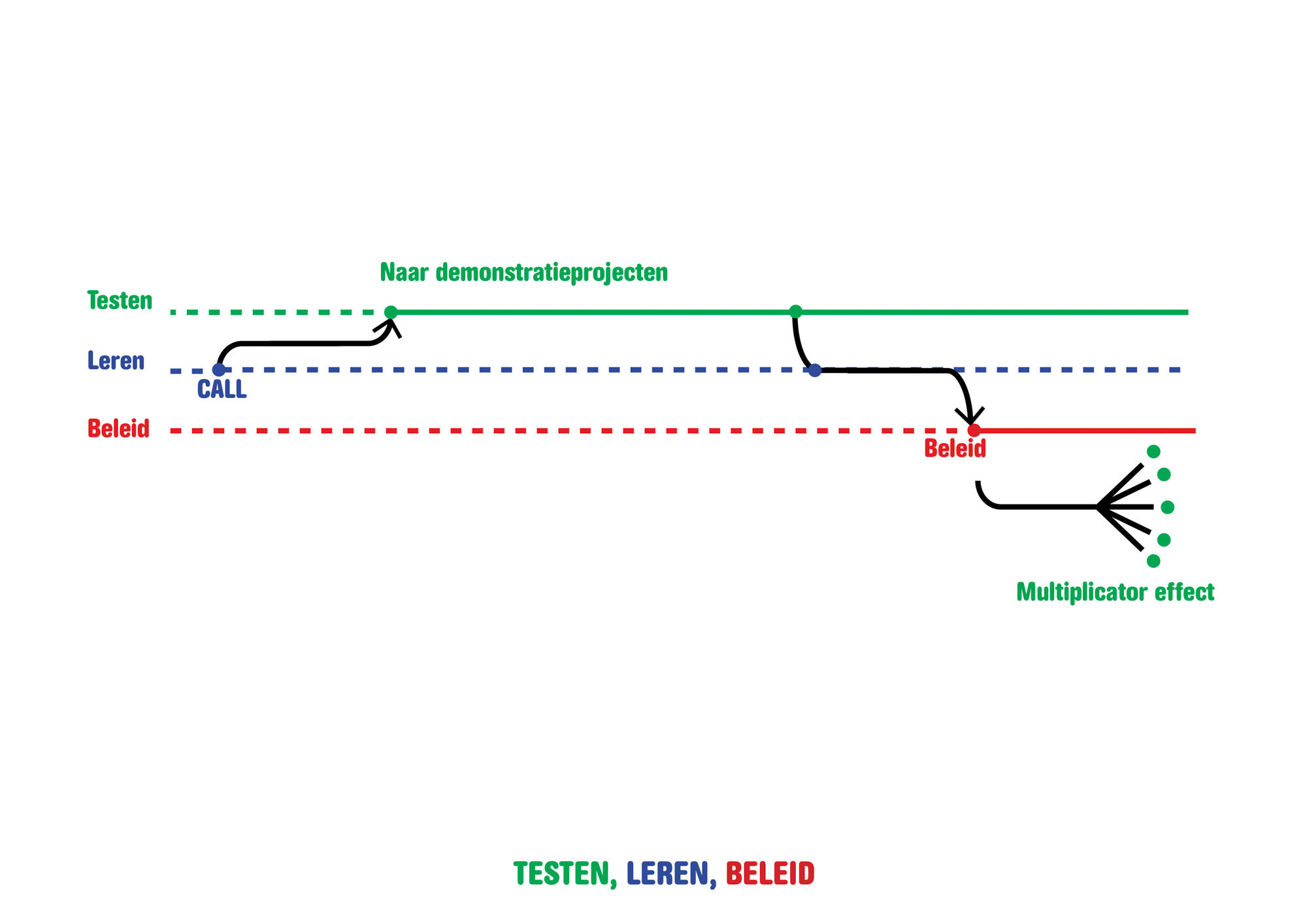
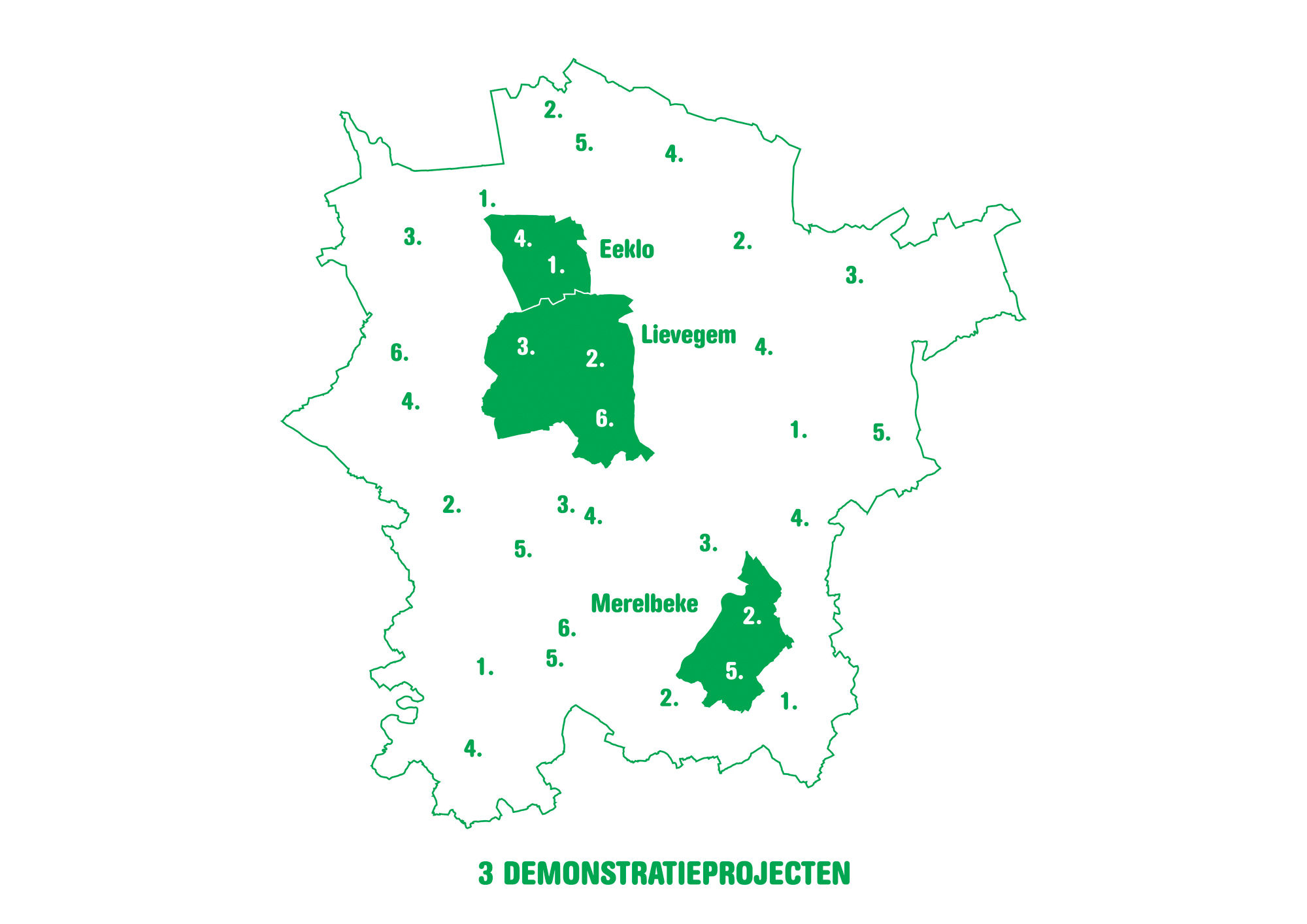
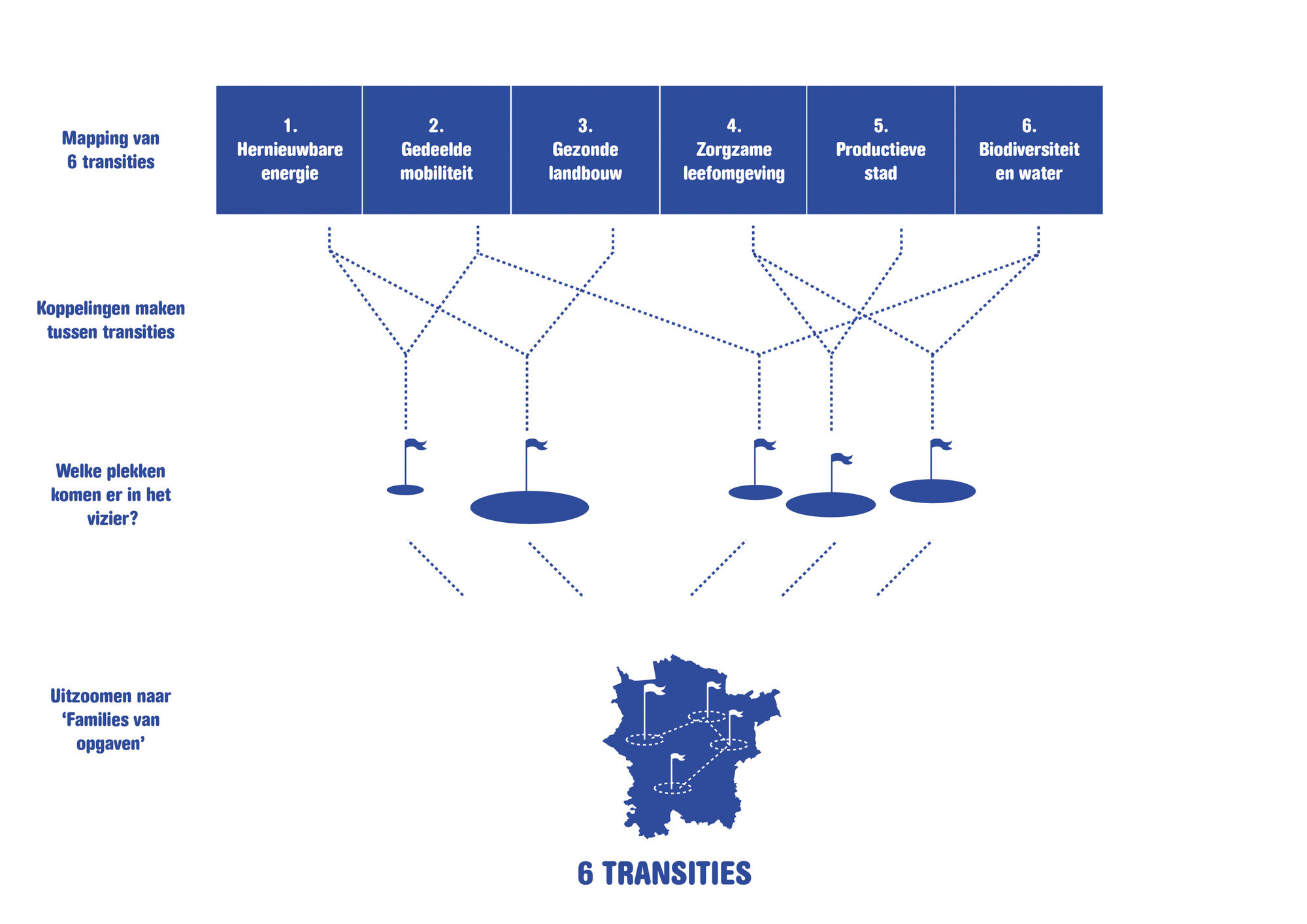
This ambitious question was the reason for the IABR and the Province of East Flanders to join forces. For three years, the IABR Atelier Oost-Vlaams Kerngebied (OVK) (Eastern Flemish Core Area), in cooperation with local and international designers, experts and stakeholders, investigates and tests how to make way for the future. And more specifically, consideration is being given as to how space can be made for the productive landscape, for new mobility systems, for circular economy and residential and working districts.
The Oost-Vlaams Kerngebied is a network of cities and municipalities in the conurbation surrounding Ghent. It is expected that the population will grow by about 15 to 25 percent between now and 2050. At the same time, there is increasing social inequality in the housing market, ageing and shrinking families. So thousands of homes, workplaces and facilities have to be added. This task puts increasing pressure on the use of space, social facilities and infrastructure.
Open space in the Oost-Vlaams Kerngebied was already too easily cut up for buildings in recent decades. But if the expected population growth is accommodated as usual, another ten percent of the existing open space is needed, on top of the currently reserved residential expansion areas. The current spatial policy literally crashed into its limits, in several respects. Other societal domains and policy sectors such as the environment, mobility or economy have so far adapted to the dominant building logic, but in view of climate objectives this is no longer the desirable practice.
The IABR Atelier Oost-Vlaams Kerngebied is therefore investigating whether it could also be the other way around, whether and how one can look at the housing challenge from the coherence of all issues. After all, more inhabitants means more human capital, increasing socio-economic dynamics and more critical mass. These are opportunities that not all regions have, and which can offer potential leverage in the Oost-Vlaams Kerngebied to tackle several major issues. The Atelier explores the regional challenges in terms of mobility, economy and ecosystem, and designs strategies in which population growth can be used as an instrument to facilitate sustainable spatial development.
The productive landscape in East Flanders consists of agricultural areas, but also of bicycle paths and slow roads, rivers, streams, canals and polders, nature reserves and forests. Each of these elements provide society with the necessary ecosystem services, separately and jointly, ranging from food production, buffering and purification of water and renewable energy, to biodiversity and (healthy) recreation. Urbanization has however strongly limited the space for the ecosystem and, therefore, its positive impact. The opposite is required to mitigate the effects of climate change. How and where can we further integrate these ecosystem services with living, working and mobility? How can we make room for water purification, water buffering and renewable energy production? And where and how can we give space back to nature?
Increasingly, economic activities are taking place in isolation on industrial estates out of and between residential areas. But living and working must take place close together if we want to reduce mobility problems. Can productive activity once again be given a place in urban and village centres? And which productive activities are involved? Can we develop more synergy or overlapping between the urban system and the port system? What opportunities are there for stimulating and scaling up short chains and for a circular economy? And how can we make way for new economic cycles?
There are far-reaching and possibly disruptive changes on the horizon in the mobility and transport sector: from self-driving electric vehicles and subsystems to mobility as a service (where mobility is not seen as a consumer good, but as a provision). If we succeed in smartly coordinating the various modes of transport and the necessary infrastructure, a connected mobility network can emerge on a regional scale, which will act as a catalyst for new, sustainable developments. What does such a conversion mean for the housing challenge? Where do new nodes emerge or are existing ones strengthened? Which places are suitable for densification and combining functions and facilities? And which places lend themselves to buffer zones, open spaces, and decompaction (being rendered water permeable or by returning vegetation)?
The IABR Atelier Oost-Vlaams Kerngebied works simultaneously along three different work tracks to integrate the multiple tasks and opportunities with the accompanying strategies and concrete, realistic project proposals into a single convincing narrative of the future. It is not only about creating a vision, but also about (daring to) testing and doing it. For a substantially different course towards truly sustainable solutions, it is necessary for everyone to participate. The IABR Atelier Oost-Vlaams Kerngebied therefore wants to play a role in the development of a regionally open knowledge platform. A broad-based future narrative is created for the entire region in cooperation with local authorities and stakeholders.
The IABR Atelier Oost-Vlaams Kerngebied is setting up three coalitions. They will work towards three exemplary transformation projects that will also be tested, using designing research, stimulation of new specific alliances, bundling of international knowledge and local input and public debate. Thus, they make the regional narrative of the future concrete. Gathered knowledge and developed strategies are shared with new alliances, and deployed in other, similar places.
The motto is: The next big thing will be a lot of small things. The future of a region is being built in many places at the same time. The regional open knowledge platform and demonstration projects provide step by step knowledge and insights with which the current policy instruments can be tested. How can it be different and better? What works where? And where doesn't it work? Which partnerships or forms of cooperation are missing, and how can they be encouraged? Which alternative instruments and methods help stimulate and accelerate the desired transformation?
